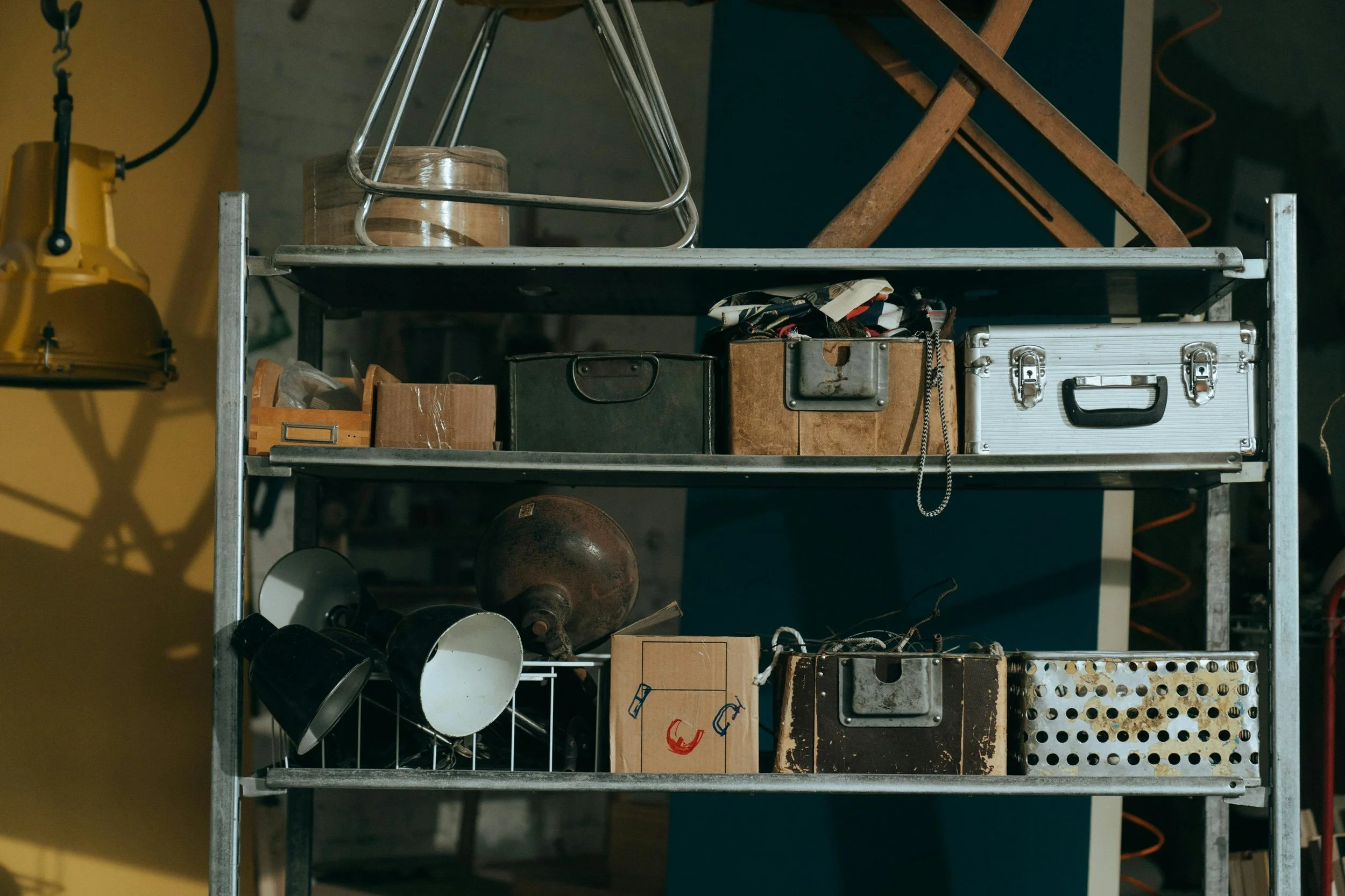Your pack rat parents are downsizing? Here’s how I survived the Great Junk Transfer
We all eventually go through it with our parents.
Now, it’s the millennials turn to help mom and dad downsize to a smaller home or apartment.
For me, it was a flight across the country and a four-day deadline before dad had to be out of the home containing 45 years of ‘stuff.’
FaceTime calls previewed what I was up against: stacks of bins and boxes leaning high against basement walls. A 45-year-old recliner and drum kit over here, racks of outerwear and sports gear over there.
When I arrived, the situation was more complex than I imagined with far more stuff to purge, sell, donate and declutter — and the clock was ticking.
Without missing a beat, dad and I hatched a plan to get his place emptied. There are services that will take care of downsizing — but what’s the fun in that?
Here’s how we survived the Great Junk Transfer:
Establish a coding system and stick to it
Our goals were speed and clarity with a touch of ruthlessness — no ‘maybes’ or ‘laters’ or ‘sentimental’ rabbit holes.
If we could save money here or there, that was a secondary goal.
We got to work colour-coding everything with tape.
I did most of the physical work while dad pointed and made decisions. I chimed in when I had an opinion — and there were a lot of those — but we agreed to only touch things once. After a quick debate and decision, it was over. No going back.
The greens were going to his new, much smaller place and so were a ‘keep.’ Only the very best quality items, that would surely fit in the new space, made the cut.
We also established that it was far too late to ship anything to my siblings and I, and those made it to the next pile.
The blues were for donations and I immediately called the local charity that dad had given things to previously to see if they could come by with their truck in two days to pick up larger items.
Duplicate kitchenware, usable furniture and garden tools made up this pile.
Certain charities in Canada can offer tax receipts for larger higher-value donated items.
There were nine additional car loads of smaller items like clothes, shoes, coats, decor, books and electronics that I drove over to the local shelter.
I spaced these trips out over the few days we were downsizing as each day I thought the Blues were done — but they kept popping up!
The yellows were to try and sell, higher ticket items like sitting chairs, sofas, book shelves, bar stools, jewelry, bed frames and antiques.
I used Kijiji to post pieces for sale as I went along (and for a true bargain ‘as is.’ If they didn’t sell within two days, they went into the blue donation pickup pile.
In just 48 hours, we’d sold more than $1,000 worth of items which helped offset moving costs.
Finally, the reds were for disposal. These items were broken, outdated, mouldy, stained, or expired.
Out-of-date electronics, mattresses, general garbage and anything unsafe. As the pile came together on that first day, I felt overwhelmed and so did my dad.
Not only was it really large, but there was a sense of annoyance at having spent so much money on this ‘stuff’ and keeping it, unused, for so long only to end up in the dump.
But, we had to keep going.
The first junk hauler came the following morning and filled up within an hour. The next one arrived the next day and the same thing happened. The last one arrived early on our last morning and was also to the brim.
This red pile was constantly shrinking, and frankly quite costly to haul away; about $500 a load. I used an online coupon to help lower the costs.
Final sweep of what’s left, and organize it well
While the volume of things reduced daily, and we grew tired, we organized and packed up what was going to the new place.
This saved quite a bit of money by not having the movers do the actual packing, and we had way less stuff to pack altogether.
When they arrived, the bins and boxes were sealed up and labelled really well to cut down time and ensure when we arrived at the new place, we knew where everything was going.
This was also an opportunity to propose digitizing some of his medical records, legal papers, tax returns and family photos once my dad was in his new place. It also was extremely helpful in locating documents related to insurance, banking, investment and his will and estate wishes.
I knew where I could find these things and how they were organized.
As the movers drove away with a pretty small truck containing dad’s things, a cleaner came in to scrub the house (one of the best uses of money during a time of transition such as this), while we sped off to close his house sale with the lawyers.
We felt incredibly organized and satisfied about the whole downsize.
In just four days, we cleared decades of stuff with a system that demanded speed, discipline, and a little muscle.
By parking emotions, selling what we could, donating the rest, and hauling away the junk, we saved money and kept the momentum going.
Downsizing isn’t easy, but with a clear plan and hard work, even the most overwhelming task can be tackled head-on, and on time.
This article was originally published in The Star. Lesley-Anne Scorgie is a Toronto-based personal finance columnist and a freelance contributing columnist for the Star.

